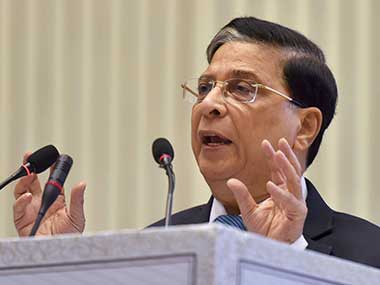PIL questions CJI Dipak Misra’s powers as master of rosters: Supreme Court’s judgment raises more questions than it answers
Alok Prasanna Kumar It's somewhat unusual for the Supreme Court to deliver a detailed judgement in rejecting a writ petition in limine, i.e., at the threshold stage itself, without issuing notice to the Union Government or

Alok Prasanna Kumar
It’s somewhat unusual for the Supreme Court to deliver a detailed judgement in rejecting a writ petition in limine, i.e., at the threshold stage itself, without issuing notice to the Union Government or any other party. More so when the petitioner, Asok Pande, is someone (in)famous for having filed over 200 Public Interest Litigation cases and has even had costs imposed on him in the past. Given that judgments delivered in limine are not considered to be binding precedent or prevent others from filing a Writ Petition on the same matter, one wondered what the Supreme Court hoped to achieve with this when a bench headed by the Chief Justice of India (and also featuring Justices AM Khanwilkar and DY Chandrachud) reserved judgement after hearing the petitioner for a few minutes on Monday.
The judgment delivered on Wednesday (11 April), authored by Justice Chandrachud, raises more questions than it answers. For a start, the court was appalled by some of the “scandalous” averments made by the petitioner against certain judges of the Allahabad High Court, but does nothing about it despite his previous history of filing frivolous and unfounded petitions. This from a court which imposed hefty penalties on public interest litigants for raising serious issues of criminality and conflict of interest, not to mention one which loses no opportunity to berate serial litigants, seems excessively mild.
That though is not the main thrust of the petition or the judgement. The petitioner’s main prayer in the writ petition is to seek a direction to the CJI to “evolve a procedure” which could constrain the Chief Justice’s power to constitute benches and allocate cases to such benches. The petitioner has certain very specific ideas on what such benches should be like, but far from going into any depth on the basis for such a demand, the judgement simply dismisses the very notion that the CJI can be asked to follow proper procedure in exercising her administrative functions.
The judgement places the Chief Justice of India in a pedestal that puts the office seemingly above such constitutional requirements as fairness and transparency. We are expected to, nay, ordered to believe that the conventions evolved and adapted over the years (but of which the court will tell us nothing about) are robust enough to ensure that there is absolutely no scope for arbitrary action. The note of resentment at questions are being asked of the office of the Chief Just of India is hard to miss especially when the whole of notion of requiring power to be exercised through rules and procedures is dismissed as based on a “presumption of mistrust”.
All of this would have been a bit convincing if perhaps the Supreme Court had not itself expressed doubts about how the CJI can be placed above the Constitution. Keep in mind that the Supreme Court effectively re-wrote the constitutional appointment process to ensure that it was not only the Chief Justice of India who had the power to recommend names to the President for appointment of judges to the High Court and the Supreme Court.
While paying homage to the high office of the Chief Justice, the Second and Third Judges do constrain the individual discretion of the Chief Justice of India in matters of appointment by making it mandatory to consult other judges on the court. Not only that, but the recommendation of the Chief Justice of India made without consulting fellow judges would not be valid at all.
Was the Supreme Court expressing “mistrust” of the Chief Justice of India or the judges in either case? Hardly. For better or worse, both cases proceed from an understanding that all power comes with the responsibility to exercise that power in a manner that is just, fair and reasonable. That in the absence of proper procedures, it is impossible for an observer to distinguish between an arbitrary and justified exercise of power. The fact that parties have a chance to be heard, that papers have to be filed in a certain manner, and evidence presented in a certain way is not the law’s inherent mistrust of a judge – it is the understanding that justice, for it to inspire confidence in the public, must not only be done but be seen to be done.
When the credibility of the judiciary, and specifically the Supreme Court, is under serious question both from within and without, here was an opportunity to assure citizens that the Supreme Court believes in such things as transparency and fairness in its own administration.
Needless to say, the Supreme Court blew it.
The author is a Senior Resident Fellow of the Vidhi Centre for Legal Policy. He is also an Executive Member of the Campaign for Judicial Accountability and Reforms.
https://www.firstpost.com/india/pil-questions-cji-dipak-misras-powers-as-master-of-rosters-supreme-courts-judgment-raises-more-questions-than-it-answers-4428691.html

